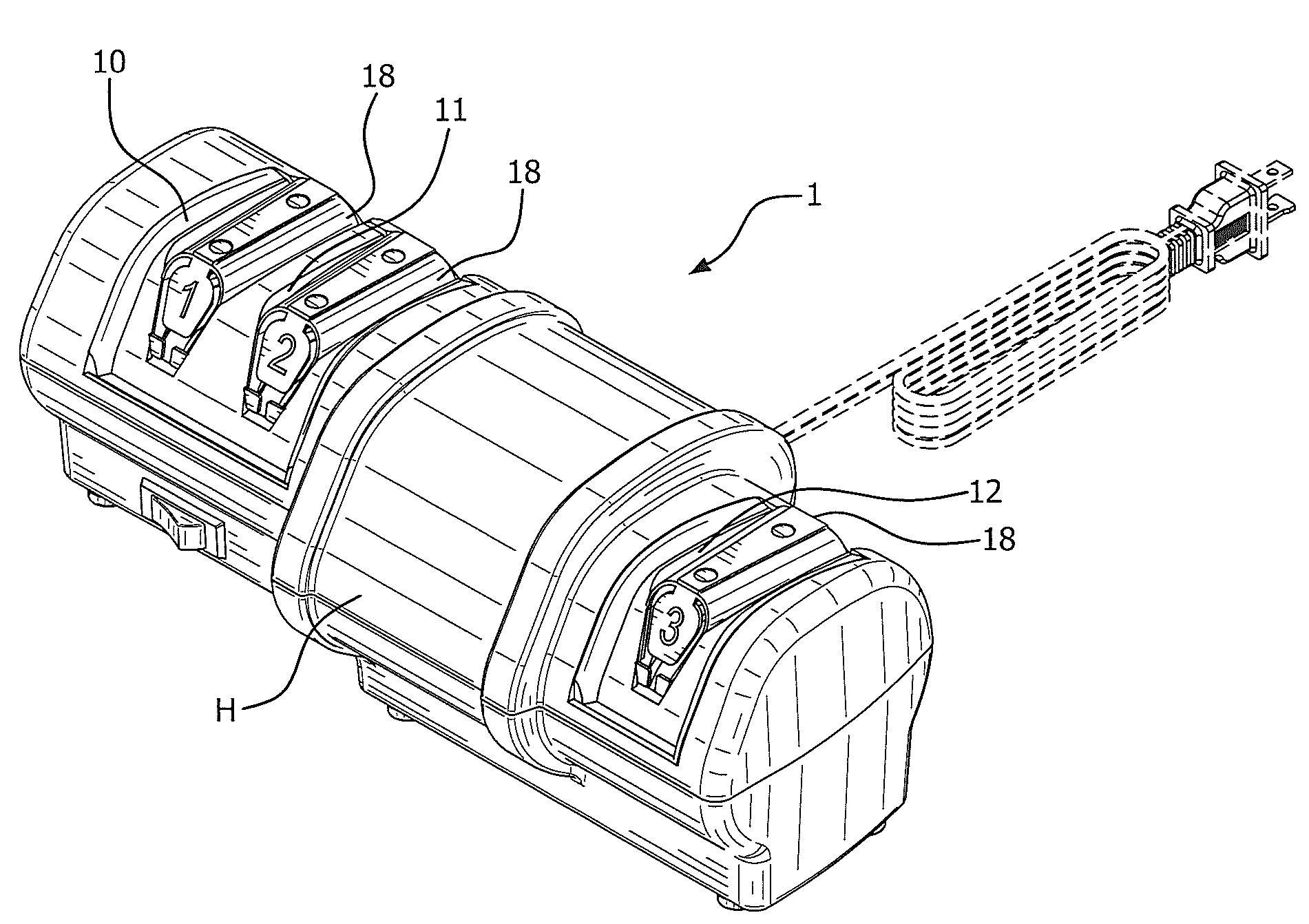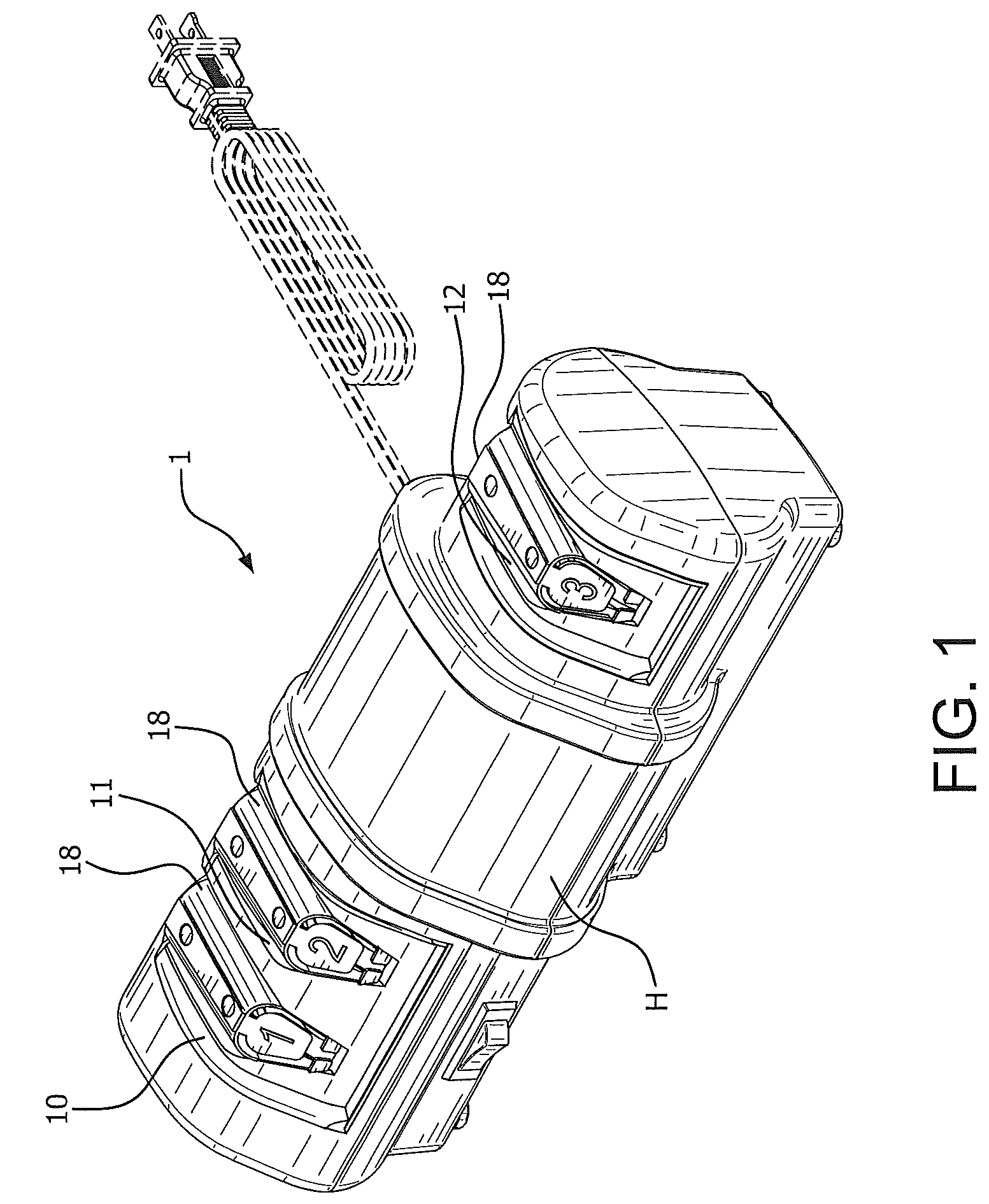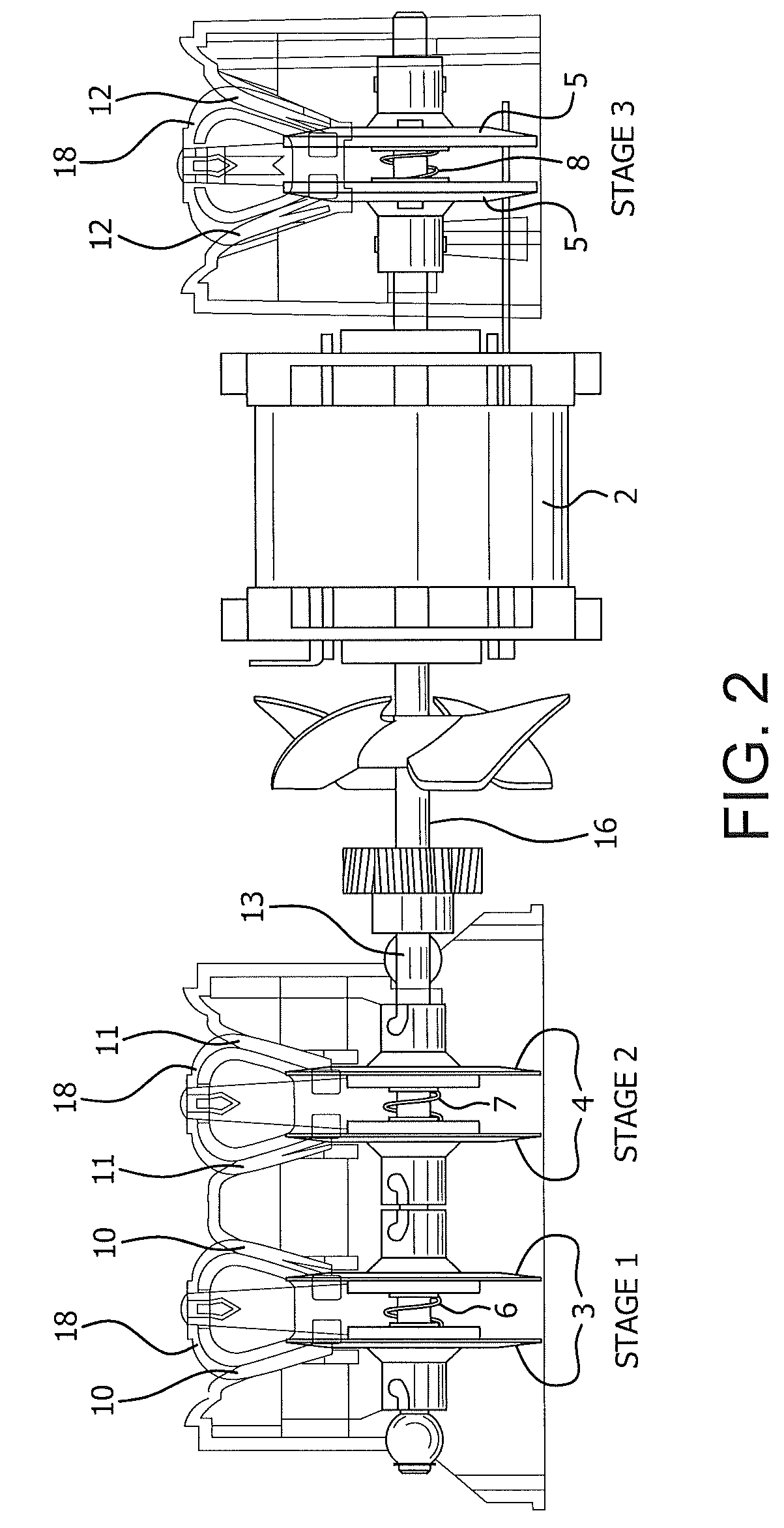Precision sharpener for ceramic knife blades
a ceramic knife blade and precision technology, applied in the field of precision sharpeners for ceramic knife blades, can solve the problems of affecting the use of ceramic knives
- Summary
- Abstract
- Description
- Claims
- Application Information
AI Technical Summary
Benefits of technology
Problems solved by technology
Method used
Image
Examples
Embodiment Construction
[0028]What the present inventors have discovered is that even the most advanced technology used successfully in the past to sharpen metallic knives was counterproductive for ceramic knives or cutting instruments made of other hard, brittle, crystalline or amorphous media.
[0029]Ceramic knives are formed from ceramic powders such as zirconium oxide and zirconium carbide which are heated to a high temperature appropriate to fuse the powders into knife shapes. The resulting structure is cured for periods of days to add strength to the resulting blades. The bonding of the granular particles is good—leaving a strong material but one that is brittle and unlike steel knives lacks any ductility or flexibility. As a consequence we found the process of sharpening of a ceramic knife must be handled entirely differently from that used successfully with steel knives. The flexibility and ductility of a steel knife allows its very thin edge to bend and distort as it is sharpened and polished vigoro...
PUM
| Property | Measurement | Unit |
|---|---|---|
| grit size | aaaaa | aaaaa |
| grit size | aaaaa | aaaaa |
| weight | aaaaa | aaaaa |
Abstract
Description
Claims
Application Information
 Login to View More
Login to View More - R&D
- Intellectual Property
- Life Sciences
- Materials
- Tech Scout
- Unparalleled Data Quality
- Higher Quality Content
- 60% Fewer Hallucinations
Browse by: Latest US Patents, China's latest patents, Technical Efficacy Thesaurus, Application Domain, Technology Topic, Popular Technical Reports.
© 2025 PatSnap. All rights reserved.Legal|Privacy policy|Modern Slavery Act Transparency Statement|Sitemap|About US| Contact US: help@patsnap.com



